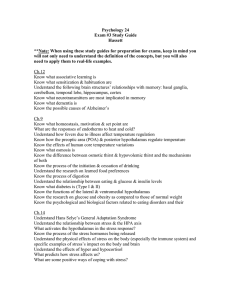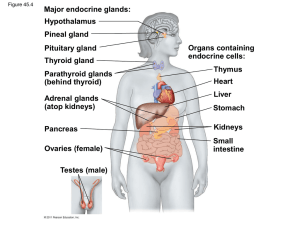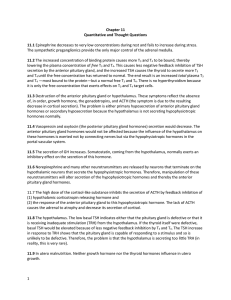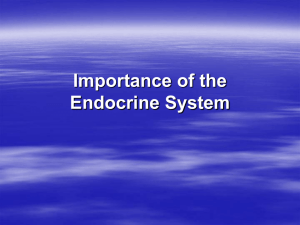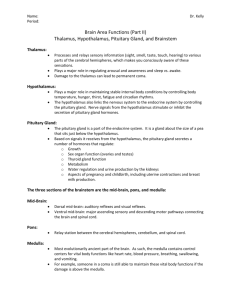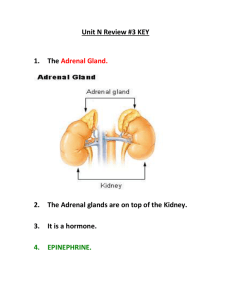Handout from Lecture
advertisement
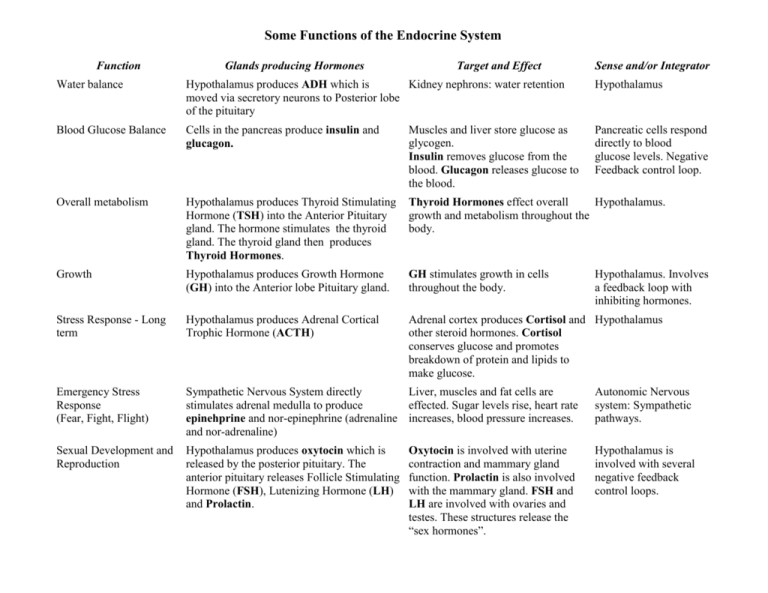
Some Functions of the Endocrine System Function Glands producing Hormones Target and Effect Sense and/or Integrator Water balance Hypothalamus produces ADH which is Kidney nephrons: water retention moved via secretory neurons to Posterior lobe of the pituitary Hypothalamus Blood Glucose Balance Cells in the pancreas produce insulin and glucagon. Muscles and liver store glucose as glycogen. Insulin removes glucose from the blood. Glucagon releases glucose to the blood. Pancreatic cells respond directly to blood glucose levels. Negative Feedback control loop. Overall metabolism Hypothalamus produces Thyroid Stimulating Hormone (TSH) into the Anterior Pituitary gland. The hormone stimulates the thyroid gland. The thyroid gland then produces Thyroid Hormones. Thyroid Hormones effect overall Hypothalamus. growth and metabolism throughout the body. Growth Hypothalamus produces Growth Hormone (GH) into the Anterior lobe Pituitary gland. GH stimulates growth in cells throughout the body. Stress Response - Long term Hypothalamus produces Adrenal Cortical Trophic Hormone (ACTH) Adrenal cortex produces Cortisol and Hypothalamus other steroid hormones. Cortisol conserves glucose and promotes breakdown of protein and lipids to make glucose. Emergency Stress Response (Fear, Fight, Flight) Sympathetic Nervous System directly Liver, muscles and fat cells are stimulates adrenal medulla to produce effected. Sugar levels rise, heart rate epinehprine and nor-epinephrine (adrenaline increases, blood pressure increases. and nor-adrenaline) Autonomic Nervous system: Sympathetic pathways. Sexual Development and Reproduction Hypothalamus produces oxytocin which is released by the posterior pituitary. The anterior pituitary releases Follicle Stimulating Hormone (FSH), Lutenizing Hormone (LH) and Prolactin. Hypothalamus is involved with several negative feedback control loops. Oxytocin is involved with uterine contraction and mammary gland function. Prolactin is also involved with the mammary gland. FSH and LH are involved with ovaries and testes. These structures release the “sex hormones”. Hypothalamus. Involves a feedback loop with inhibiting hormones.
